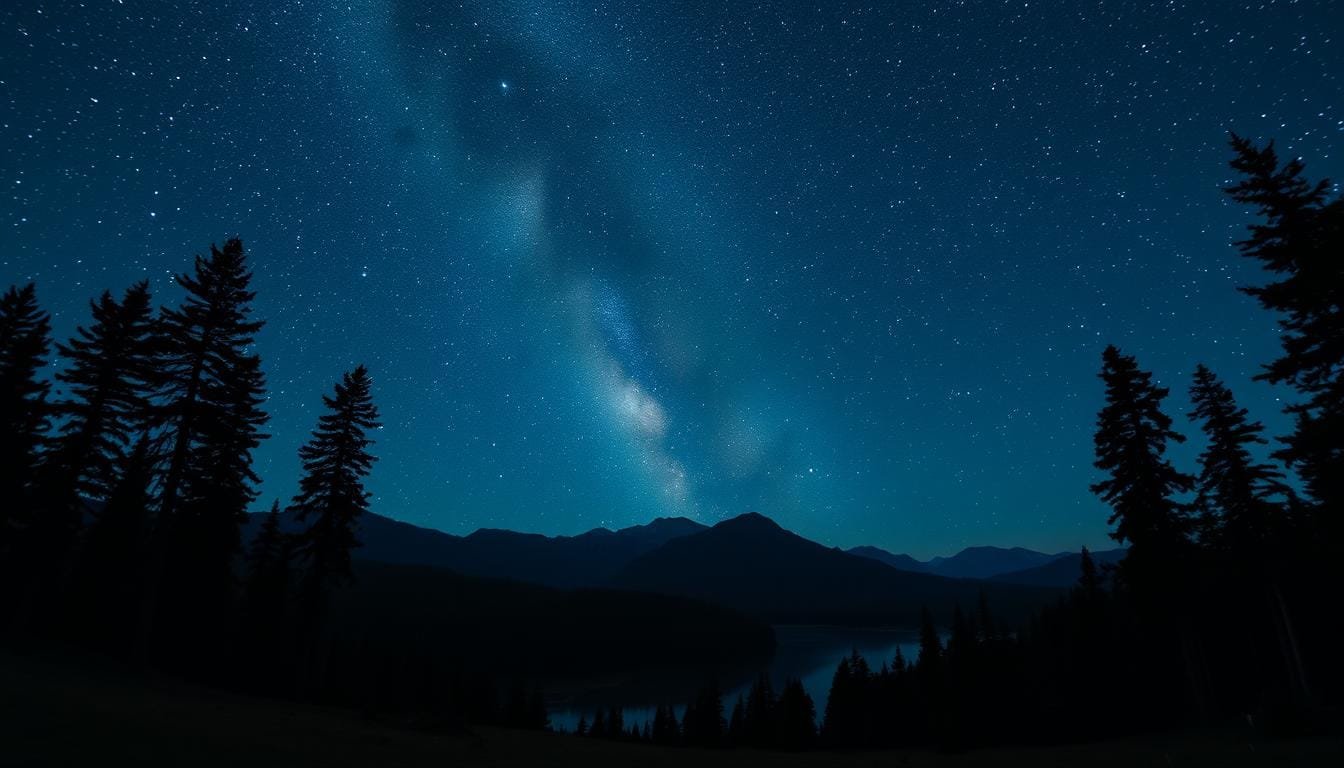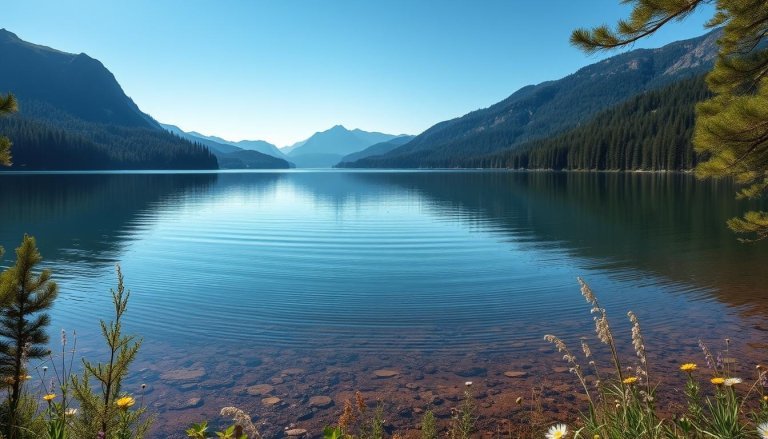USA stargazing offers amazing views of the night sky. You can find these views in national parks and remote deserts. The country has over 60 International Dark Sky Reserves, great for those who love astronomy.
Light pollution makes it hard for 80% of Americans to see the Milky Way. But, dark sky destinations are becoming more popular. These places have very little light, letting visitors see planets, stars, and even the Northern Lights.
Night sky watching can be as simple as looking up from your backyard. Or, it can be an adventure in national parks. Many parks have special events like telescope nights and full moon walks with rangers. The best spots combine beautiful views with dark skies, making memories for astronomy fans.
If you love stargazing or just want to try it, the USA has many places to explore. From Texas deserts to Idaho mountains, there’s a perfect spot for you to see the night sky.
Best National Parks for USA Stargazing

The USA has some of the best places to see the stars. As cities get brighter, these dark spots are more important. Let’s look at the top national parks for gazing at the Milky Way.
Death Valley and Joshua Tree: California’s Dark Sky Gems
Death Valley is one of the darkest places in the world. Its remote spot and clear skies are perfect for stargazing. Joshua Tree offers a beautiful view for photos, making it a great place for starry adventures.
Big Bend National Park: Texas’ Starlit Desert
Big Bend National Park has some of the darkest skies in the lower 48 states. It’s great for seeing the Milky Way. Ranger-led tours make it even better.
Yellowstone’s Celestial Wilderness
Yellowstone spans Wyoming, Montana, and Idaho. It has huge areas without artificial light. The Milky Way is visible from April to October, making it a top spot for stargazing.
Great Basin: Nevada’s Astronomical Wonder
Great Basin National Park in Nevada is an International Dark Sky Park. It gets fewer than 150,000 visitors a year. This means less light pollution and better stargazing, perfect for those who want clear skies.
| National Park | Best Time for Stargazing | Special Features |
|---|---|---|
| Death Valley | Year-round | Highest darkness classification |
| Joshua Tree | Summer months | Unique desert landscape |
| Big Bend | Winter months | Darkest skies in lower 48 states |
| Yellowstone | April to October | Vast light-free areas |
| Great Basin | Summer months | Low visitor numbers, pristine skies |
Essential Tips for Dark Sky Viewing
Stargazing fans, get ready for an amazing cosmic camping trip! Light pollution grows by 10% each year. It’s key to find dark skies. Here are tips for great stargazing and astrophotography.
Best Times and Weather Conditions
Winter is the best time for stargazing. Nights are longer and the air is clearer. Look for moonless nights and check the weather. DarkSky International’s list helps find the best spots.
Required Equipment and Safety Measures
Bring these for your space adventure:
- Red flashlight to keep your night vision
- Warm clothes for cold nights
- Binoculars or telescope for close looks
- Star charts or apps for finding your way
Stay safe in remote spots. Let your eyes adjust to dark for 20-30 minutes.
Photography and Viewing Techniques
Get great photos on astrophotography trails with these tips:
- Use a sturdy tripod for steady shots
- Set your camera to manual mode
- Try long exposures
- Join guided tours for expert tips
Light pollution affects 80% of people. Follow these tips for a better stargazing experience. You’ll also help keep our dark skies.
Hidden Stargazing Gems Across America
America has many hidden spots for starry night adventures. These places offer amazing views of the cosmos. They are perfect for those who love to observe the stars.
Central Idaho Dark Sky Reserve
The Central Idaho Dark Sky Reserve covers 1,400 square miles. It’s one of the biggest areas of natural darkness in the U.S. Sun Valley and Ketchum host Dark Sky dinners with local astronomers. These dinners offer unique stargazing experiences.
Cherry Springs State Park, Pennsylvania
Cherry Springs State Park is the top spot for stargazing in the eastern U.S. Its 360-degree Astronomy Observation Field gives clear views of the night sky. The park’s remote location means little light pollution, making it great for star watching.
Kissimmee Prairie Preserve, Florida
Kissimmee Prairie Preserve State Park, covering 54,000 acres, became Florida’s first Dark Sky Park in 2016. This preserve offers a rare chance to stargaze in the Sunshine State, away from city lights.
Rappahannock County Park, Virginia
Rappahannock County Park, near the Blue Ridge Mountains, is one of the few East Coast spots where you can see the Milky Way. Its location near the Appalachian Trail makes it a favorite among hikers and stargazers.
| Location | Key Feature | Best Time to Visit |
|---|---|---|
| Central Idaho Dark Sky Reserve | Largest area of natural darkness | Summer months |
| Cherry Springs State Park | 360-degree observation field | New moon nights |
| Kissimmee Prairie Preserve | Florida’s first Dark Sky Park | Winter months |
| Rappahannock County Park | Milky Way visibility | Late summer/early fall |
Conclusion
USA stargazing offers a chance to escape our bright world. Light pollution is growing fast, making these dark spots more valuable. Places like the Grand Hotel are now sold out for dark sky packages in 2023.
Death Valley and Yosemite offer amazing views of the night sky. Yosemite’s waterfalls glow in the moonlight. There are now 210 International Dark Sky Places worldwide, showing a big effort to keep these views.
When you’re out stargazing, let your eyes adjust for 30 minutes. Most North Americans can’t see stars from home anymore. These spots are key for us to see the stars and help keep them for the future.



